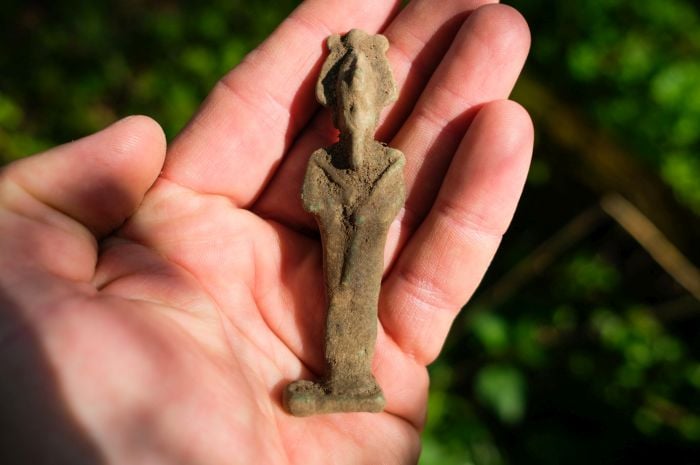
Ancient Egyptian and Roman sculptures have been discovered in Kluczkowice, a small village in eastern Poland. Experts spent a year confirming their authenticity and determining how they got there. Roman finds are unusual in the area, initially raising doubts about their authenticity, said the Lubelskie Voivodship Conservator of Monuments.
The pieces have been traced to the village’s Kleniewski family, according to Łukasz Miechowicz, of the Institute of Archeology and Ethnology of the Polish Academy of Sciences. One of the village’s residents, Maria Kleniewski, had planned to create a chamber of antiquities, as revealed in her diaries and her correspondence with the State Archaeological Museum in Warsaw, Miechowicz said. She likely acquired the Osiris sculpture when, in failing health, she spent part of 1904 at a fashionable resort in Heluan, near Cairo, and visited Alexandria.
Photo courtesy Science in Poland.
But fate had other plans. The Kleniewskis hastily moved to Warsaw in 1942, fleeing the Nazis, who confiscated their belongings. Maria’s fate is unknown; her son, who inherited the estate, died in World War II.
In ancient Egypt, Osiris was the god of fertility, the afterlife, and death and resurrection, typically shown with green skin, the beard of a pharaoh, and a distinctive crown, holding a crook and flail. After his brother Set chopped him into pieces, his wife, Isis, brought him back to life by wrapping him, making him the first to be associated with the wrapping of the mummy. Bacchus, meanwhile, is the Roman god of wine.
Photo courtesy Science in Poland.
Experts at the National Museum in Lublin, along with archaeologists at the University of Warsaw, confirmed the authenticity of the bronze Osiris sculpture, which dates from the first century B.C.E., and the bust of Bacchus, which dates from the first century C.E. and, they think, is likely a fragment of a larger sculpture.
In April, Miechowicz was conducting research at the site when researcher Andrzej Kołodziej came upon another bronze Egyptian figure of Osiris.
“Capturing the traces of a valuable collection that was lost years ago is of great importance for science, cultural heritage, and the development of tourism,” said Miechowicz in a press release.
More Trending Stories: